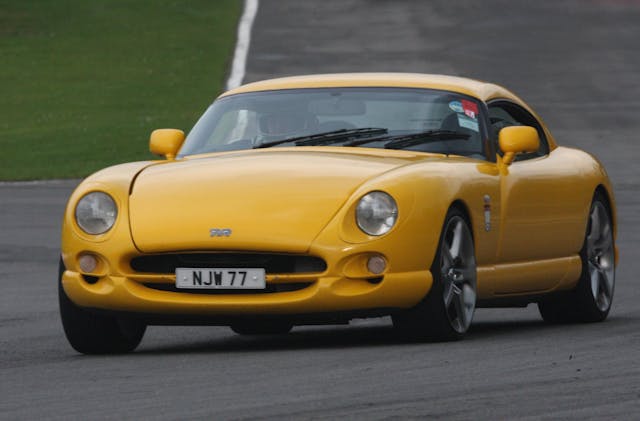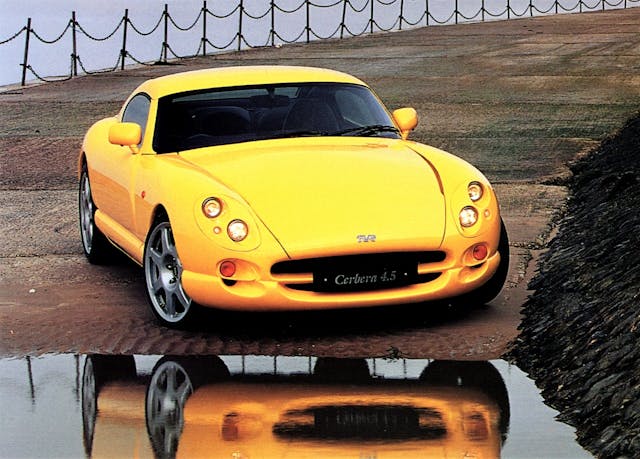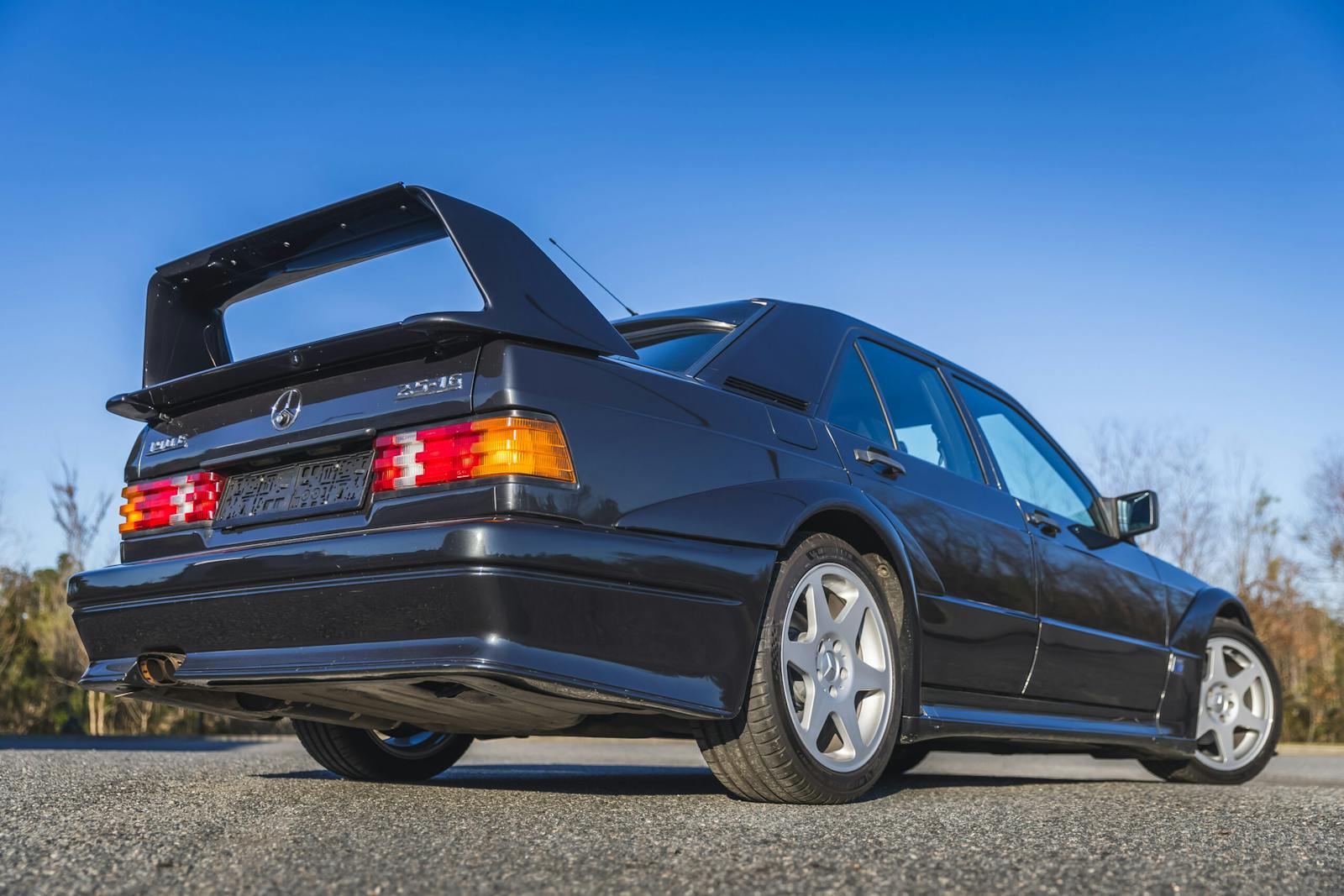Thinking of a Skyline GT-R? Buy this instead
That sound you hear from across the Pacific is shipping containers filling with Skyline GT-Rs. Good examples, bad examples, from virtuous dealers and unscrupulous dealers—it doesn’t matter. They’re coming into the U.S. at a steady pace under normal importation for cars over the age of 25, and a solid trickle under the Show or Display rule for younger eligible models. The Skyline is the poster car of recently legal collector-car imports, and they’re becoming regular arrivals at the ports of Seattle, Oakland, and Los Angeles. Especially on the coasts, but increasingly across the country, examples of Nissan’s halo car are taking the prime spots at cars and caffeine events. And if you can afford the six-figure price tag these hero cars of Forza and Grand Turismo routinely command, each passing month provides more inventory.
But if you’re looking for an import that stands out, there’s another model that’s even more outrageous, certainly as fast, and also found fame in those video games from the early 2000s. It’s not on the radar for many collectors yet, but it deserves to be in the conversation. It’s the TVR Cerbera 4.5.
For those with a laser focus on JDM cars and specifically the GT-R, hear me out: This car from another island country with a strong sports-car history has a lot to offer. The rare and boisterous TVR is more than the Skyline’s match in performance. You’ll still be shifting with your left hand (the vast majority of Cerberas were produced for the U.K. home market in right-hand drive), but you’ll be pocketing a ton of cash with your right; in addition to showing a clean pair of tail lights to the Skyline, the Cerbera will only set you back about a third as much.

It’s not as easy as you’d think to do an apples-to-apples comparison between the two cars—Nissan officially capped the GT-R’s horsepower rating 276 hp, which everyone knows was farcically underrated. It also put its power down through all four wheels, while TVR chose the more conventionally-sporting rear-wheel drive for the Cerbera. The British brand’s bonkers 4.5-liter, 425 hp flat-plane crank V-8 (an engine that incidentally was the horsepower-per-liter V-8 champion when it was introduced) in the Cerbera offers its own visceral contrast to the underrated, grippy drivetrain in the GT-R.
More than the trivialities of exact power ratings, it’s mass that matters. The Skyline weighs a full thousand pounds more than the TVR—3400 versus 2400 pounds. Acceleration times reflect that. 100 kph (62 mph for those of us using the other side of the ruler) comes up in 3.8 seconds for the TVR, versus 4.4 seconds for the Skyline. And while the Nissan’s all-wheel-drive system helps it put down the power, and its Super HICAS four-wheel steering system sharpens its responses, the analog simplicity of the TVR (no traction control, no ABS and rear-wheel drive) makes the Cerbera the true unreformed hooligan. It’s simply a more entertaining drive. In one of the all-time best bits of automotive hyperbole, Top Gear said of the Cerbera: “It was as if someone had put wheels on a thunderstorm.”
Is the TVR more challenging to own than the Nissan? You likely know the answer to that question. The GT-R was the product of a real car company capable of cranking out millions of cars a year. TVR was a boutique firm that built just under 1500 Cerberas from 1993 through 2006 when the company shut down. Bespoke parts (and there are many) can be challenging to source, but so can the non-TVR bits. Think mirrors from a VW Corrado, mirror switches from a Ford Mondeo, and a Range Rover radiator. Perhaps the most hysterical? The source of the front indicator lenses—those are from an Alvis Scorpion, a light tank. (We’re not sure why you would, but if you’re going to source parts from a tank, do like TVR and nab them from the fastest production tank of all time.) That said, if you’re thinking of importing a car, you likely have higher tolerance than most for finding resources to keep it running.

Thankfully, the fact that almost all Cerberas are right-hand-drive won’t be problematic for you if you’re in the market for a Skyline—either way, you’ll be learning to shift with your left hand. Club support is excellent in the UK, but not so great in North America where the car was never sold new.
The truly great news about the Cerbera is the price—vetted, and sorted cars (with any chassis rust issues addressed), are still an incredible deal at around $30,000 to $50,000 plus shipping. Incredibly rare left-hand-drive cars start at over $50,000. It’s probably best to buy one from the UK rather than from continental Europe since the former is where the vast majority of institutional knowledge is. That the name is derived from Cerberus, the three-headed dog from Greek mythology that guarded the gates of hell, is just an added bonus to the car’s aggression.
Let’s face it—if you’re willing to import a car with the steering wheel on the “wrong” side, you’re willing to go to extremes. If you really want to stand out and have a wild time doing it, the Cerbera is the choice. All day long.
***
Check out the Hagerty Media homepage so you don’t miss a single story, or better yet, bookmark it. To get our best stories delivered right to your inbox, subscribe to our newsletters.



Since this article is being reposted. GT-R’s and TVR’s have little in common. One is a Japanese turbo and awd tech-mobile and the other is a raw car built in a shed. You can like both but one is not a substitute for the other.
Your comment is awaiting moderation. – again
Always loved the looks of this car.
Nice stuff.
Let me see if I got this right: one has an inline 6 turbo, but the other has a flat-plane V8; One has all-wheel-drive and the other just spins the rears; one was made in the thousands by a large car company that’s still in business, but the other is a parts-bin special made by a boutique car maker no longer in business; One looks like it’s ready to step on the track and dominate at a moment’s notice, but the other looks like a granny-bespectacled mid-90’s “ovals era” Ford Taurus. So you’re saying they have something in common? Oh yeah, the steering wheel is on the right.
I was going to reply exactly the same thing – thanks for saving me the time… and just when I was about to put my ’92 GT-R up for sale (not).